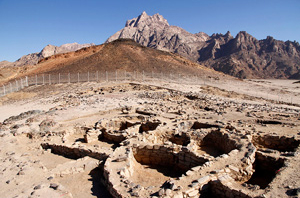Sumio FUJII
My long-term research issue is to trace the formation process of mobile pastoralism in the drylands outside the Fertile Crescent. A key to approaching this issue is the five-millennium cultural sequence from the Pre-Pottery Neolithic B when sheep and goats were first domesticated to the Early Bronze Age when full-scale nomadic society based on tribalism is supposed to have been established. Toward this goal, I have continued archaeological investigations in the Bishri mountain range in central Syria, the al-Jafr Basin in southern Jordan, and the Tabuk Plateau in NW Arabia over three decades. The series of field research has enabled us to outline the sequence from the formation of pastoral transhumance in the latter half of the PPNB, through the derivation of initial mobile pastoralism in the Late Neolithic, to the establishment of tribal society during the Late Chalcolithic to the EBA.
However, this is nothing but a general outline. This research project aims to develop the details of the perspectives suggested above and provide further specific insights into the formation process of the nomadic society in the dry heartland of the Near East from the comprehensive viewpoint including burial practice, ritual landscape, social structure and anthropological aspects of nomadic populations, water-use technology, petroglyph, and contents of livestock. I promote the entire research team toward positive mutual cooperation as the project leader and, at the same time, address intensive excavations in Jordan and Saudi Arabia as a section leader.
Selected publications
・Fujii, S. (2018) Bridging the enclosure and the tower tomb: new insights from the Wadi al-Sharma sites, north-west Arabia. Proceedings of Seminar for Arabian Studies 48: 83-98.
・Fujii, S. (2016) Wadi Ghubai and Wadi Mohorak Sites: Protohistoric burial fields in the Tabuk Province, northwestern Arabia. In: M. Luciani (ed.), The Archaeology of North Arabia: Oases and Landscapes, pp. 111-131. Vienna: Austrian Academy of Sciences.
・Fujii, S. (2016) Custom of temporary entrance sealing: Evidence for PPNB pastoral transhumance at Wadi Abu Tulayha, southern Jordan. In: M. Reindel, K. Bartl, F. Luth and N. Benecke (eds.), Palaeoenvironment and the Development of Early Settlements, pp. 123-133. Rahden: Verlag Marie Leidorf GmbH.
・Fujii, S. 2014. 5. Chronology of the Bishri pastoral prehistory and protohistory: A cross-check against the Jafr chronology in southern Jordan. Studia Chaburensia 4: 63-92.
・Fujii, S. (2013) Chronology of the Jafr Pastoral Prehistory and Protohistory: A Key to the Process of Pastoral Nomadization in the Southern Levant. Syria 90: 49-125.












